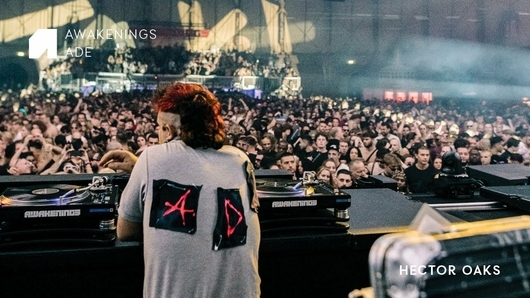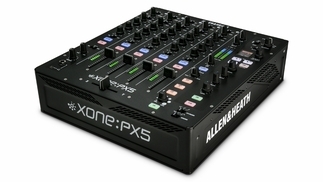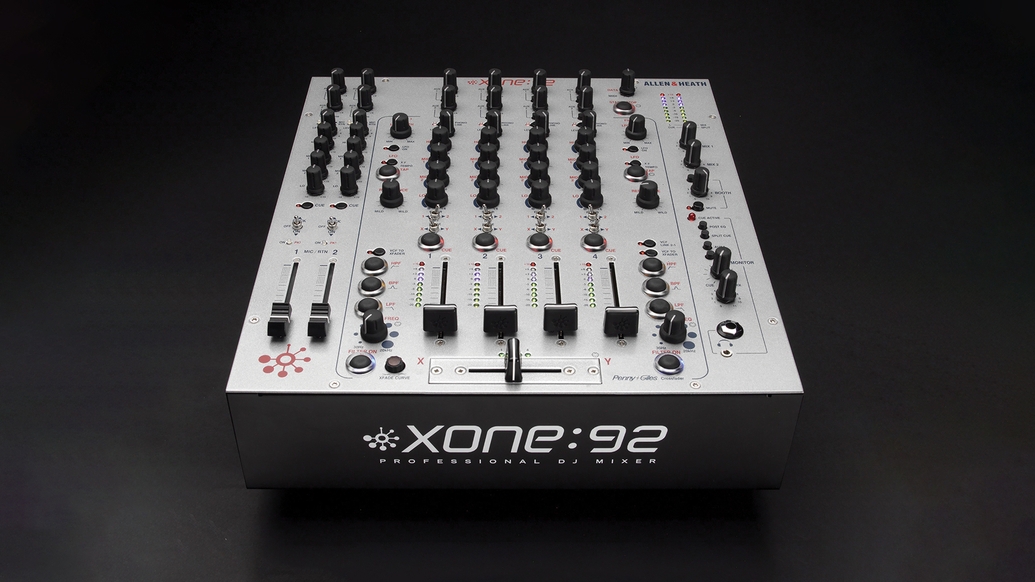
How Allen & Heath’s Xone:92 wrote a new blueprint for DJ mixers
Allen & Heath’s Xone:92 celebrates its 20th anniversary this year. Remaining an industry standard, the mixer has stood the test of time. Here, DJ Mag’s tech editor, Mick Wilson, takes a look at the history, the heritage, and the enduring importance of this well-loved, if polarising, piece of DJ technology
When development for the Xone:92 began in early 2003, Andy Rigby-Jones, Xone founder and then Allen & Heath’s design manager, felt he could push the envelope of what a DJ mixer could be. Drawing on his own experiences in the booth, as well as feedback from several big name DJs at the time, Rigby-Jones had a list of improvements he wanted to incorporate into the 92 that he felt could set it apart. However, nobody could predict the long-lasting impact the mixer would have on electronic music.
“It was the follow-on from Xone:62, which in turn traced its roots back to an A&H live mixer, the MixWizard 20S,” Rigby-Jones explains. “Both the 62 and the 20S had four-band EQ, which is why the 92 has a four-band EQ, but the goal was to improve on the 62. We increased the EQ width on cut and narrowed it on boost on the two mid-frequency bands, and we also introduced total kill on both the low- and high-frequency bands.”
The 92 also introduced a new twin filter system, heralding a giant leap forward in the potential for differing creative approaches to mixing. Other mixer filter circuits allowed for basic HPF and LPF operation, shared between channels, but the innovative new filter circuit on the Xone:92 offered three filter types: LPF, HPF and BPF. These could be activated individually or simultaneously, in any combination — and there were two of them.
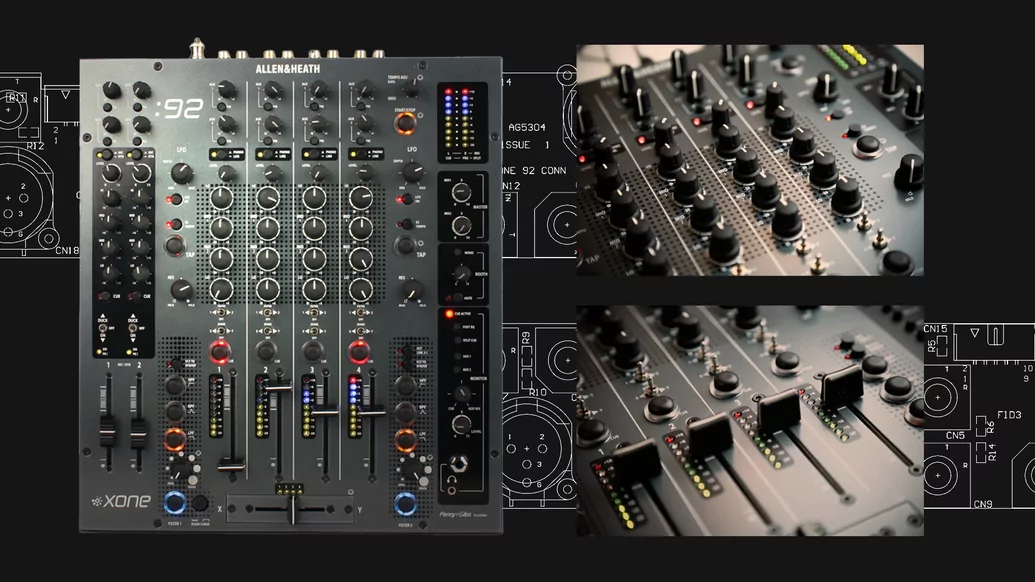
“The Xone:92 ticked so many boxes in terms of sound quality, design and usability. It just left every other mixer in the dust.” — John Digweed
The 92 featured another first in its MIDI output round back, inspired by an early Xone:62 adopter. “Richie Hawtin inspired us to include MIDI, which stemmed from Richie’s custom Xone:62 built by his dad, Mick Hawtin,” Rigby-Jones says. “This was at the dawn of computer-based DJing and was five or more years ahead of its time.”
“All of my early Plastikman music was created with an A&H studio mixer, so when I saw that they had moved into the DJ world, it was a perfect match for me,” Richie Hawtin adds. “They were ahead of their time with features you would normally only find on studio mixers, like four-band EQs, effect send and returns, and multifunctional stereo filters.”
On a cold night in Shoreditch, London, in December 2003, the Xone:92 — or at least a prototype version — made its debut at a packed Cargo nightclub with Hawtin at the helm. “Richie was the first DJ to put the 92 through its paces live, which was a bit nerve-wracking with a prototype unit,” says Rigby-Jones. Matt Smith, now the technical manager at fabric in London, was working at the club at the time. “I remember the debut of the prototype 92 at Cargo,” he explains. “Along with the team at Allen & Heath, we just got it together before doors with a big bag of spare parts. It was close.”
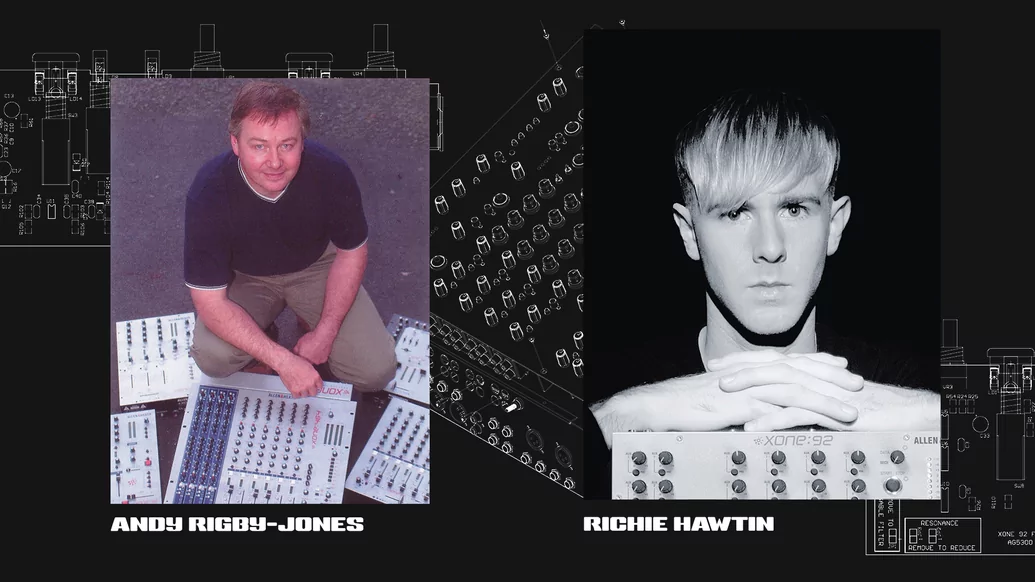
Three months later, in the warmer surroundings of Miami’s Ultra Music Festival 2004, with over 200 artists across 11 stages, the Xone:92 was officially launched. “We managed to place 92s on nearly every stage at the festival,” recalls Rigby-Jones. “They all worked perfectly for the duration of the festival, and on the last day, as I stood among the huge crowd in front of the main stage, it occurred to me that the 92 was going to be a great product. But I never imagined that, 20 years later, it would still be in production, top of many DJs’ riders, and still very much relevant.”
John Digweed says it was at Ultra Music Fest that year that the mixer showed why it would go on to dominate the market for so many years. “It ticked so many boxes in terms of sound quality, design and usability,” he explains. “It just left every other mixer in the dust.”
But why is it still relevant after all this time? In many ways, it is because everything else around it has changed. Trends have seen playback devices change from decks to CDJs to laptops — and sometimes back to decks again — but the purely analogue design of the Xone:92 means that it can still slide into almost any set-up. If you have an interface or media player with analogue outputs, you can build your set-up around the 92. “With the Xone:92, we had, for the first time, a mixer that would accommodate our needs,” agrees Chris Liebing. “Moving from playing totally analogue with vinyl into the new era of playing digitally with Final Scratch, using computers and controllers.”
The Xone:92 also became known for its reliability and durability. “Just like how people still love using Urei mixers for their sound quality and build, the Xone:92 has always been a favourite for so many DJs, as it is reliable and caters for most DJs’ needs,” says John Digweed. “But most importantly for DJs who care about sound quality, this mixer is rock solid and never fails.” “I’ve been using it for seven years now, and my live performances can be quite harsh on equipment,” agrees Angie Taylor. “So far nothing has failed or been damaged, it’s just a really robust and tough mixer.”

“The 92 is the heart of my set-up, it’s where everything comes together. It has a warm sound with great summing, which perfectly fits my live act, and I use it like an instrument.” – Angie Taylor
King Shiloh sound system’s Bredda Neil echoes that the flexibility built into the 92’s interface has also helped make it a staple. “There was only one mixer that came close to our requirements and that was the Xone:92,” he says. “You could kill the bass, mid and tops independently; you could have a mono bass output to the amps; echo machines could be added; parametric EQ on the output; multiple microphones could be plugged in; and there was a send and return function.”
But when asking DJs what they love most about the Xone:92, the answer is pretty much constant: the sound. Rigby-Jones says this is all down the the components used on the mixer. “The combination of all FET op-amp signal path; the VCAs; and the particular capacitors we used... This all contributes to the harmonic signature for which the 92 has become renowned,” he explains.
When speaking about the mixer, Héctor Oaks says that the 92 has significantly influenced his style of all-vinyl mixing. “[It] is the best standard club mixer of all time,” he enthuses. “It sounds incredibly warm, it mixes beautifully. When pushed into the red, it imparts certain sonic characteristics to the music. It adds unique colour, and pleasant distortion that elevates any good sound system.”
Other DJs, including Paco Osuna and Cristian Varela agree that the 92’s EQ and filter set it apart from its competitors at the time. But it’s not just traditional DJs that have embraced the 92. Performers who incorporate synths and instruments into their set have adopted the Xone:92 for the quality of its analogue summing. Angie Taylor, who blends bass guitar, vocals, Ableton Live and Traktor in her live sets, explains that the 92 remains at the heart of her live set-up. “It’s where everything comes together. It has a warm sound with great summing, which perfectly fits my live act, and I use it like an instrument,” she explains.

“A generation after inception, Xone:92 remains an industry standard for good reasons,” says Al Crombie, Xone product specialist at Allen & Heath. “In a scene of endlessly changing hardware and increasing digital ubiquity, Xone:92’s classic all-analogue design is tried and tested, a constant amidst change, giving DJs the core tools to perform without prescribing options, encouraging artists to develop an individual style.”
Richie Hawtin adds that the mixer was one of the first that allowed DJs to push beyond the A-B crossfading style of mixing two tracks together, allowing for a deeper manipulation of sound, and subsequently new creative approaches to mixing and layering music.
“Due to its beautiful design, quality and sound, the Xone:92 turned out to be a blueprint for many, many mixers,” adds Chris Liebing. “It will always be the OG and, since it’s a timeless mixer, it is as amazing today as it was back then.”
